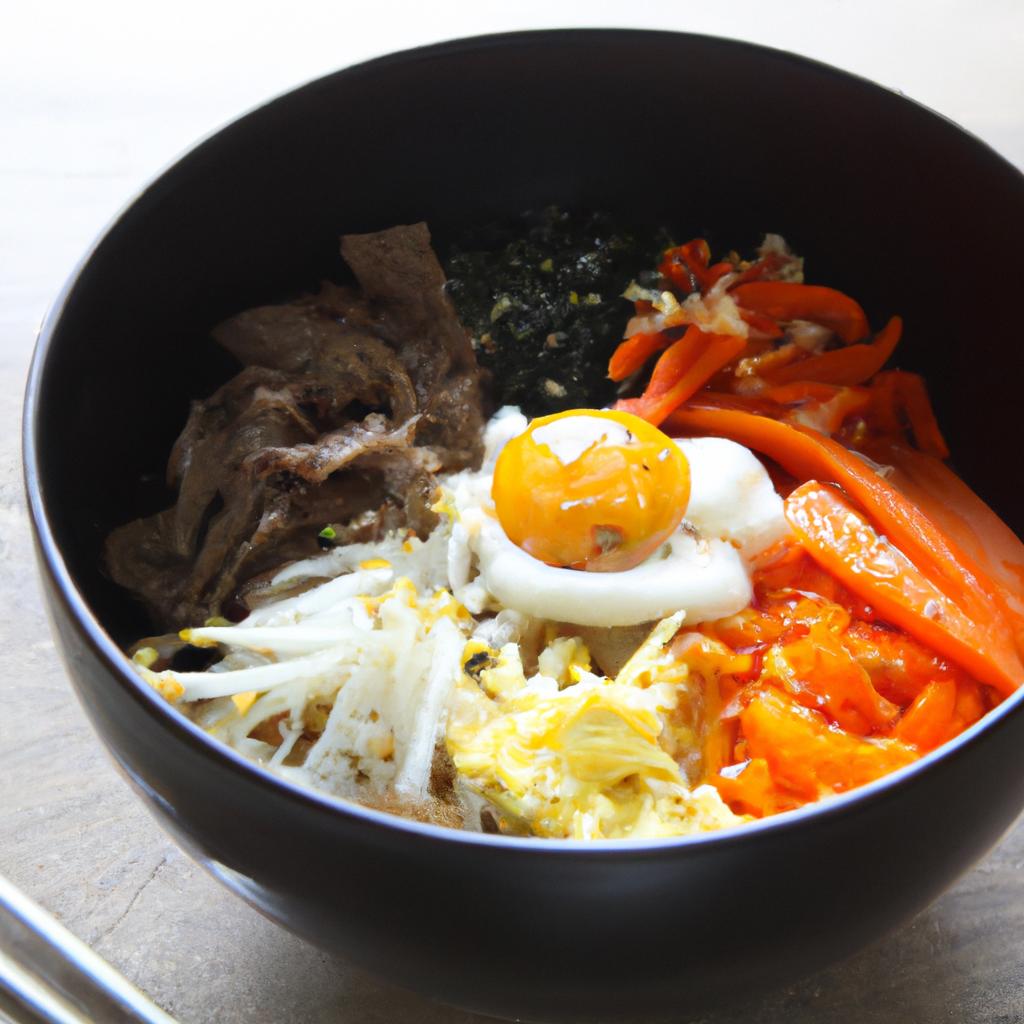Bibimbap bowl

Bibimbap is a popular Korean rice bowl dish that is known for its colorful and flavorful combination of ingredients. The word “Bibimbap” means “mixed rice” in Korean, and that’s exactly what this dish is - a mixing of various ingredients placed on top of a bed of steamed rice. The dish is not only scrumptious, but also a reflection of Korean culture and history.
Bibimbap is said to have originated as a dish for farmers during the Joseon dynasty, a period of Korean history that lasted from 1392 to 1910. During times of harvest, farmers would combine whatever vegetables and leftover meats they had on hand, creating a nourishing and filling meal. The dish became popular among the general population and eventually evolved into the Bibimbap that we know and love today.
The beauty of Bibimbap is its versatility – there are countless variations of the dish based on regions and personal preferences. However, a traditional Bibimbap bowl typically consists of rice, sautéed vegetables, marinated meat, and a sprinkling of sesame seeds and oil. The vegetables used in Bibimbap can vary, but usually include some combination of carrots, spinach, zucchini, and bean sprouts. The marinated meat can also vary, but the most common choice is beef, which is thinly sliced and marinated in soy sauce, garlic, and sesame oil.
One of the key components of a Bibimbap bowl is gochujang, a spicy and savory fermented chili paste. Gochujang is a staple in Korean cuisine and is used in many dishes, including stews, marinades, and dipping sauces. In Bibimbap, gochujang is often mixed with sesame oil and used as a sauce to give the dish its signature spicy kick and depth of flavor.
The colorful arrangement of ingredients on top of the rice also contributes to the appeal of Bibimbap. Typically, each ingredient is placed in a separate section of the bowl, creating a visually appealing dish that is almost too pretty to eat. However, the true pleasure of Bibimbap lies in mixing all the ingredients together, creating a harmony of flavors and textures.
While the traditional version of Bibimbap uses meat and vegetables, there are also vegan and vegetarian variations of the dish that are just as delicious. For example, tofu can be substituted for the meat, and other vegetables such as mushrooms and bell peppers can be added in.
Overall, Bibimbap is more than just a rice bowl – it’s a representation of Korean heritage and culture. With its unique combination of flavors and textures, Bibimbap is sure to please even the most discerning palate. Try this Korean dish at home and see how it becomes a staple in your household!
Ingredients:
For the Rice:
1 cup of brown rice 2 cups of water
For the Bibimbap Bowl:
1/2 cup shredded carrots 1/2 cup cooked spinach 1/2 cup bean sprouts 1/2 cup sliced shiitake mushrooms 1/2 cup sliced bell peppers 1/2 cup sliced zucchini 1/2 cup sliced cucumber 4 tablespoons soy sauce 4 cloves garlic minced 1 tablespoon sesame oil 1 tablespoon sugar 1 tablespoon gochujang (Korean spicy paste) 1 tablespoon olive oil 4 large eggs 2 tablespoons sesame seeds salt & pepper to taste
Instructions:
-
Rinse the rice and put it in a rice cooker or pot with water. Cook rice according to your rice cooker’s instructions or boil uncovered in a pot for 30-35 minutes until cooked through. Let it cool down until warm.
-
In a mixing bowl, make the sauce by whisking together soy sauce, garlic, sesame oil, sugar, and gochujang.
-
Heat a pan over medium-high heat and add the olive oil. Add in the mushrooms, peppers and zucchini, and sauté them for 2-3 minutes until they are slightly charred. Salt and pepper to taste.
-
In the same pan, add the bean sprouts and a splash of water, then sauté for another 2-3 minutes until they are tender.
-
In another pan, fry the eggs according to your preference.
-
Divide the rice into four individual bowls. Top each bowl with an equal amount of shredded carrots, cooked spinach, sautéed mushrooms and vegetables, and cucumber.
-
Drizzle the sauce over the bowl, top with fried eggs and sprinkle with sesame seeds.
-
Serve and enjoy your delicious Korean Bibimbap bowl!